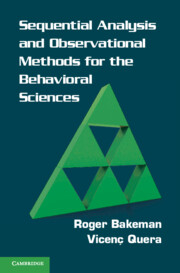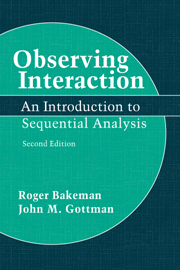Analyzing Interaction
Psychologists, educators, animal behaviorists, and other researchers who observe and study sequences of behavior have found Bakeman and Gottman's Observing Interaction helpful in planning their research and analyses. Now its companion volume, Analyzing Interaction, provides the practical underpinning and tools to carry out the sorts of sequential analyses suggested by the earlier book. First, a simple notational scheme for sequential data is introduced (SDIS or Sequential Data Interchange Standard). Then basic sequential statistics are discussed, elaborating and extending the material presented in Observing Interaction. Two computer programs are also included with the book. The SDIS program checks and prepares sequential data for efficient analysis. The GSEQ program tallies sequential data into contingency tables designed by the user and computes a variety of sequential statistics.
- Written in clear, straightforward prose
- Flexible, poweful yet easy to use computer programs
- No other program for sequential analysis can do as much as GSEQ
Reviews & endorsements
'A major contribution to the study of interaction analysis, providing much needed methodological advances in our application of sequential analysis. The authors' programs are clear and versatile. GSEQ is incomparable in the different kinds of sequential analyses permitted.' Campbell Leaper, University of California, Santa Cruz
Product details
October 1995Paperback
9780521449014
166 pages
229 × 153 × 12 mm
0.274kg
6 b/w illus.
Unavailable - out of print February 2005
Table of Contents
- 1. Applied sequential analysis: basic tools and terms
- 2. Sequential examples: talk, attention, distress, and infants
- 3. Basic SDIS: sessions, conditions, times, and events
- 4. Advanced SDIS: state, timed event, and interval data
- 5. Basic GSEQ: specifying target and given codes
- 6. Modifying SDIS data
- 7. Specifying time windows
- 8. Computing contingency table statistics with GSEQ
- 9. Running SDIS and GSEQ: the GSEQ user interface
- 10. Advanced GSEQ: practical problems and solutions
- Appendices.












